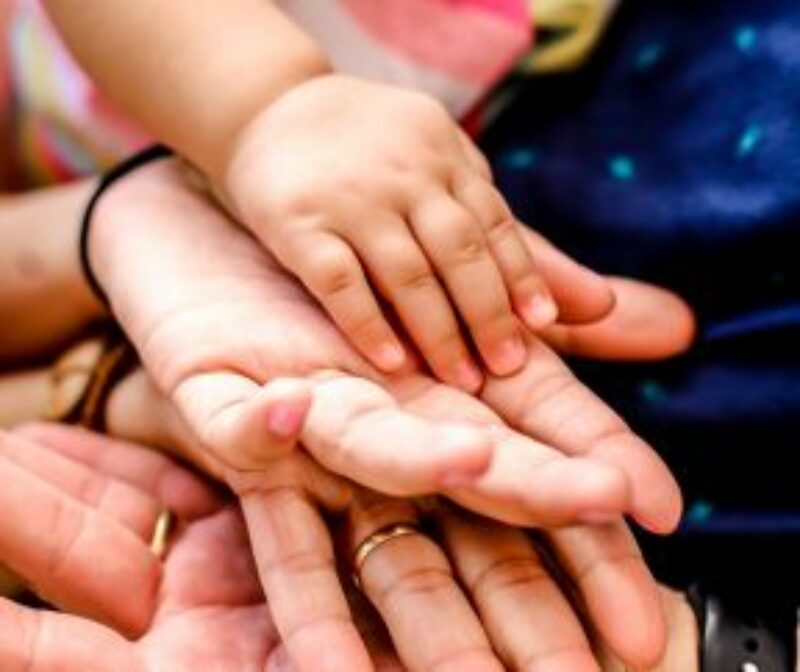The Formation of our Spirituality
Spirituality—how we experience and live out our spiritual beliefs—is inherently relational. It guides our connections with others and is truly a relational phenomenon. There are components of spirituality and spiritual beliefs that inherently benefit from social influence, the nurturing environment of community, and cohesive language used within our families and social systems. This speaks to how we are created for community: our spiritual beliefs, spirituality, and our ability to make meaning do not exist in vacuums. They are deeply intertwined in a root system that, when healthy, unlock the power of our spirituality that is less available to us on an individual level.
There is research to support the hypothesis that people who are deeply connected to a spiritual source have more resources for thriving as well as form a cohesive narrative and identity that motivates virtue development and a prosocial worldview.1 Being a part of a religious community can function as a spiritual anchor2, providing a safe space to work through life’s deepest existential questions about identity and purpose. These are all components of the root system that connect us with our deeper spiritual self, enriching our capacity to love and be loved.
Reciprocal Community is Central to Spiritual Health
Contrary to our decidedly individualistic post-modern society, we are designed to live an interdependent, reciprocal life with others, directly using our gifts for the benefit of our community and freely receiving the gifts of others. As the altruistic bonds of earlier civilized structures eroded,3 so did the familiarity of turning to others for help or care—we have become detrimentally independent and unnaturally isolated. Just as each part of our body is designed to work in conjunction with the other without any individual part being able perform the task of another, so is humanity designed to work together with our uniquely endowed gifts being a part of the grand design, dependent on the healthy functionality of the others.4
The irony of developing our individual spirituality is that it can actually not be full and complete outside the boundaries of a group—a reciprocal faith community. We need each other for the full completion of our own “self.” Without such community, the totality of our faith could be left in a state of perpetual searching. In fact, the ultimate display of our spirituality is the ability to reflect back the image of our spirituality onto the community around us. Spirituality is not just for our benefit—we manifest and affirm our own individual faith through mutual giving and receiving4, leaning into the greater good.
While we are meant to live as individuals in our relationship with spirituality, that is meant to be paralleled by an interdependence with other people. In other words, we are called to be unique and not uniform, and in connectedness, not anonymity. The result of living outside community is suffering.
Relationships Must be Healthy
Even in the first year or two of our lives, our expectations about relationships and our relational habits are being intensely shaped by our caregivers. As we grow, these relational dynamics, known as attachment styles, become the subconscious lens through which we view ourselves as we relate to others and directly impact the capacity of our functionality in relationships, whether that is friendships, authority figures, or romantic relationships. You may already be questioning what this has to do with spirituality, so let’s talk about it!
Because our attachment style is initially formed in infancy, unless otherwise reworked it becomes our standard of normalcy. Even in the unhealthiest of relationships, we may be unable to recognize dysfunction because of its familiarity to us. Attachment styles play heavily into what we determine is a healthy relationship. (Read more about attachment styles here.) Until we are of an age to self-reflect and attune to healthier dynamics displayed by others and, likewise, have the privilege of exposure to such relationships, it is difficult to pursue healing in these areas.
A healthy faith community can offer a secure environment in which to witness healthier relational dynamics and the freedom to shift our own perspective and narratives to one of safe connection that models health. However, integral to this healing is we ourselves leaning into health so we can recognize the health of a faith community and eventually be a healthy contributor to the group as well.
What are some traits of a healthy faith community?
- Emphasis on importance of emotional health
- Awareness around mental health/stigmas
- Addressing issues of social justice
- Insight into what helps/what hurts (fear-based, black and white thinking)
- Avoidance of a culture of toxic positivity
- Establishing trust, respect, and safety through small communities
- Accountability without shame
- Affirmation of gifts and uniqueness
- Opportunities to build mutual, interdependent relationships where both vulnerabilities and strengths can be supported
- Shared values, beliefs, and expectations that promote trust, respect, and safety
- Opportunities to lead and serve out of one’s gifts
A healthy faith community offers love, healing, and security that gives us the ability to move beyond any challenge we face and positively impacts our ability to love others and be open to receiving their love. There was a young man who recently joined our faith-based community5–6 of mentors and coaches. His family relationships were fractured and the trajectory of his future was not on the most promising path. After surrounding himself with a faith community that modeled compassion, healthy relationships, safety, and encouragement, he was not only able to graduate high school, but also received scholarships to several major universities. The transformative power of a healthy faith community cannot be overstated.
Practice
- Do you need to make adjustments to your routine to edit some people out, and include other people inside your inner circle. What do you need to do to improve your relationships? Do certain people need more nurturing? Do any need less of your focus?
- If this exercise was difficult for you, take heart. There is a community for you. Here are some places to start.
- Think again about your day-to-day or weekly life patterns. Is there anyone you naturally cross paths with that, with some intentionality, could offer a caring, reciprocal friendship? Write down their name(s).
- Are there small moments of flexibility in your schedule that could be connection points (grabbing coffee, a chat while walking your dog, even texting a funny meme or about a common interest that might grow a friendship)?
- Outside of direct friendships, is there a faith community you would consider joining? Perhaps something in the radius of your life or somewhere that is recommended.
Continue Exploring

Blog
Created for Community (Part 1): How We Moved Away From our Village
Humans thrive within community, but our modern age encourages poor relational habits. Think about the nature of your relationships with the help of the practice in this post.

Blog
Attachment Styles: Why Does Love Sometimes Feel so Difficult? (Part 1)
What do you need to understand about your attachment style?

Blog
Attachment Styles (Part 2): Will Love Always Feel This Hard?
Understand attachment through this case study.
